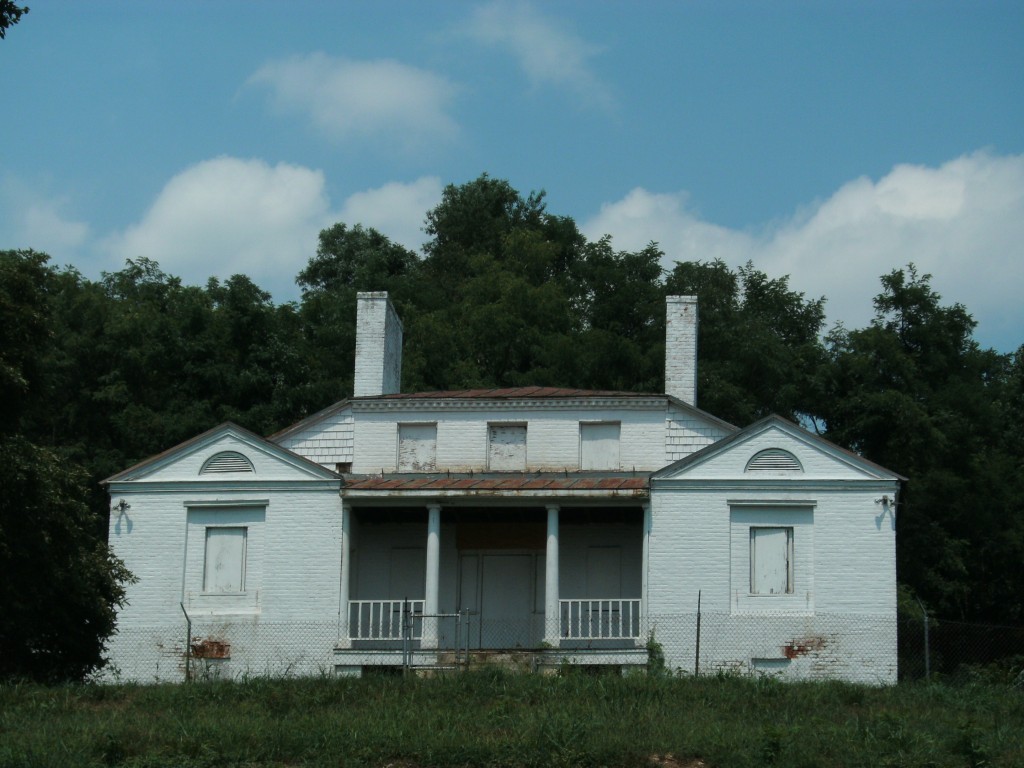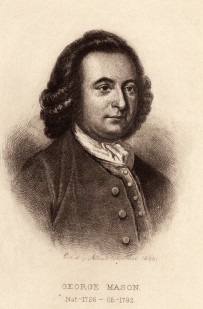Telling the SAT Story: Historic Huntley, from Vandalized Gem to Learning Hub
Historic Huntley
Alexandria, VA
Year of Award: 2009
National Park Service SAT Grant: $100,000
Matching Share Leveraged: $100,000
After years of neglect, one of Virginia’s overlooked architectural treasures, the Historic Huntley manor, is finally getting the care it badly needs.
Built in 1825 for Thomson F. Mason, mayor of Alexandria and grandson of George Mason, author of Virginia’s Declaration of Rights, Historic Huntley was a state-of-the-art example of a Federal Style villa. By 2010, however, the manor had become a dilapidated property. The Fairfax Park Authority decided to preserve their treasure before it was too late. To save their local gem, the Park Authority, a group of concerned citizens called “The Friends of Historic Huntley” and political leaders applied for a Save America’s Treasures (SAT) grant from the National Park Service. The grant provided $100,000 to fund the site’s extensive structural rehabilitation and restoration work.

Historic Huntley Manor before restoration. Photo courtesy of Ser Amantio di Nicolao.
What was known about Huntley before 2010? Not much, according to Kathy Lindquist, Historic Preservation Project Manager for the Park Authority. They knew the house’s original owner was Thomas Mason, but they didn’t know much else for certain.
With funding secured, historians probed into documents to learn about the origins of the house, and craftspeople examined the architecture and landscaping. These experts deduced that Mason built his high style home as a summer retreat. Sitting on 2.5 acres just below a ridge line, the house has a clear, unimpeded view to the Potomac River. Cool winds blow up from the water to the house, making it the perfect summer get-away. A large, domed, subterranean ice house accompanies the villa. The ice house is too large for a single family, preservationists say, but perfect for large gatherings which called for iced foods or drinks. Ice houses were popular among the United States’ early founders; Washington had one at Mount Vernon, and Jefferson had one at Monticello. During its heyday, terraced gardens at Huntley sloped down from the house to a 2,000 acre plantation where Mason raised corn, rye, wheat, and oats. Earth berms and ditches indicate that the land had to be drained for farming. Historic documents note that twenty enslaved individuals worked and lived on the property.

George Mason, author of Virginia’s Bill of Rights and grandfather to Thomas Mason. Photo courtesy of the University of Chicago Library and the Library of Congress American Memory digital collection.
Between Mason’s eight children, his activity in local politics, and the farm, Historic Huntley was a bustling summer haven at its prime. But after Mason’s death at the age of 53, the property fell on hard times. Financially unable to maintain it, Mason’s widow and children fled south during the lead up to the Civil War. A tenant farmer was left overseeing the farm, the slaves and the slaves’ children, with no compensation. In a stroke of irony, the tenant farmer, a Union sympathizer, protected troops of the 3rd Michigan Infantry at Huntley during the winter of 1861. But after changing hands various times, the manor lay deserted for 20 years in an “advance state of decline,” says Lindquist. Abandoned, it suffered considerable vandalism until the Fairfax County Park Authority took interest in it and purchased it in 1989.
Throughout the restoration and rehabilitation process, preservationists and craftspeople kept a keen eye out for archaeological and historic finds to help them understand more about the property’s history and construction. And new treasures cropped up: When pathways around the house were installed, the historic carpenter unearthed a brick wall in the landscape.
Due to the SAT grant, questions have been answered, but mysteries still remain. “Even with the funding,” Lindquist says, “We still have not been able to answer many questions. We know the center block was built first, but not why and for what purpose?” Lindquist continues, “Why are there no builders’ trenches? What is the real purpose of the out building? Did the local tavern owner of the famous Gadsby Tavern build the ice house, or did Mason?”

Historic Huntley after its restoration. Photo courtesy of Bandd80.
Luckily, the once dilapidated house is now an educational and interactive hub for learning how to answer these questions and exploring the region’s history. The Save America’s Treasures funding worked to stabilize and restore the interior and exterior of the property, but the Park Authority has left one wing of the house as an “architectural learning lab” without plaster, exposing the bones of the building so the public, school students, and historic preservationist students can learn about construction methods used in the late Federal period. And Huntley tangibly keeps the history of Fairfax County alive. It shows visitors how the Civil War turned the region upside down, dividing neighbors, causing southern sympathizers to flee, propelling prominent families to financial demise, and in the case of Historic Huntley, leaving a Union sympathizer to oversee a plantation with slaves.
The community has quickly taken to the property. School groups and scouts regularly tour it, community meetings and events are held on it, and there are special open houses and educational programs. But there is more that can be done. The Park Authority hopes to have a full-time interpretive staff at Huntley that can knowledgably discuss the architecture with visitors and research answers for outlying questions. The Huntley staff plans to expand the historical and cultural programs at the house and efforts are underway to install exterior interpretive signs. The Save America’s Treasures grant helped the Park Authority leverage publicity on the project, and budget discussions for next steps and aspirations have been productive, Lindquist says.
Historic Huntley, a romantic summer retreat built by one of the most distinguished American families, turned vandalized property, is finally being discovered. Through the Save America’s Treasures grant, the government and citizens came together to make the restoration possible. The grant allowed skilled craftspeople to dig deep and unearth this “gem,” as Lindquist calls it, and the momentum created by the grant has not slowed. Further plans are in motion: the collaborative group also secured two Park Bond programs which provided an additional multi-million dollars towards preservation and redevelopment of the site. Already, the property has brought the community together to rediscover their past and engage the imaginations of budding preservationists, architects, and craftspeople.
For more information on Historic Huntley, please visit their website, or connect with them on Facebook.
Established in 1999, the Save America’s Treasures program is managed by the National Park Service, with the National Endowment Agencies, to preserve and protect nationally significant properties and collections for future generations of Americans. Stories of saving those treasures will be shared through partnership with the American Architectural Foundation.



